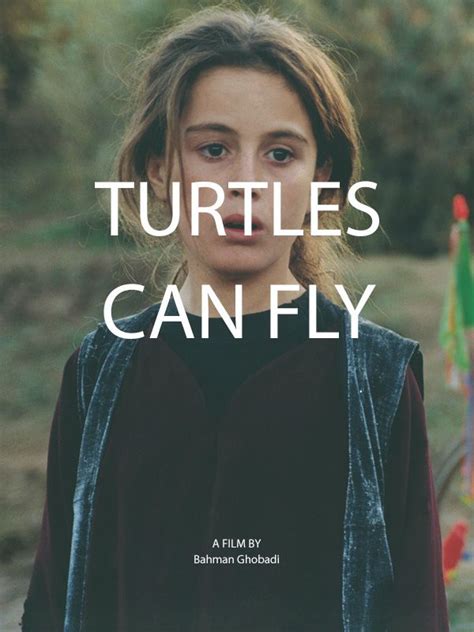Turtles Can Fly

Description:
Set in a Kurdish refugee camp on the Iraq–Turkey border after the Gulf War, Turtles Can Fly follows Satellite, a sharp, hopeful 12-year-old who leads a wary gang of orphans through a landscape of minefields, poverty and danger. As they barter, scheme, and dream of escape, Bahman Ghobadi crafts a lyrical, unflinching portrait of childhood resilience amid chaos. The film blends stark realism with intimate, humane moments that linger long after the credits.Keywords:
Landmines, Drama, War Drama, Coming Of Age, Kurdish Cinema, Iranian Cinema, Foreign Language FilmWhy is the movie called Turtles Can Fly?
The film "Turtles Can Fly," directed by Bahman Ghobadi, is set against the backdrop of the Iraq War and focuses on the lives of children in a refugee camp. The title symbolizes hope and resilience amidst the harsh realities of war. Turtles, known for their slow movement and vulnerability, represent the innocence and fragility of childhood, while the concept of flight suggests the desire for freedom and escape from suffering. The juxtaposition highlights the contrast between the children's aspirations and their grim circumstances.
Is Turtles Can Fly a good movie?
"Turtles Can Fly" is widely regarded as a powerful and impactful film. Directed by Bahman Ghobadi, it was released in 2004 and is set in a Kurdish refugee camp in Iraq just before the Iraq War. The film skillfully addresses themes of war, innocence, and survival through the eyes of children. Its raw storytelling, strong performances, and poignant cinematography have earned it critical acclaim, making it a significant work in international cinema. Overall, it is considered a good movie, particularly for those interested in socially relevant narratives.
Is Turtles Can Fly based on a true story?
"Turtles Can Fly" is not directly based on a true story but is set against the backdrop of the Iraq War and portrays the lives of children in a Kurdish refugee camp in the aftermath of conflict. The film, directed by Bahman Ghobadi, highlights the harsh realities faced by these children, including the impact of war and the struggle for survival. While the characters and specific events may be fictional, the film reflects real experiences and struggles of many in war-torn regions.
What happens at the end of Turtles Can Fly?
At the end of "Turtles Can Fly," the film’s young protagonist, Sang-woo, who has been caring for a group of orphaned children in a war-torn region of Iraq, faces a tragic conclusion. As the story unfolds, hope is symbolically represented through the arrival of a satellite dish, suggesting a connection to the outside world. However, the grim realities of war culminate in a devastating scene where the children are caught in an explosion, leading to a poignant and heartbreaking end that underscores the impact of conflict on innocent lives.
Explore More Categories: